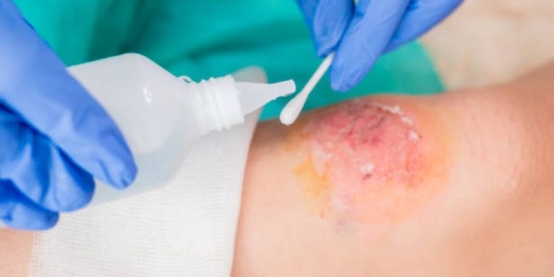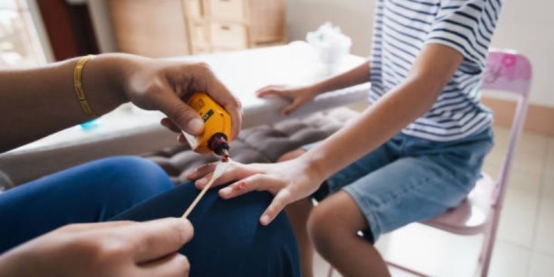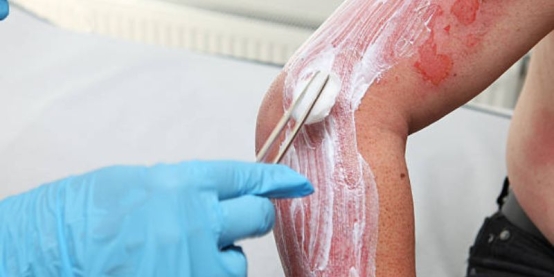Natural Treatments for Minor Burns: Home Remedies & Tips
A "minor burn" is typically a first-degree burn (involving only the epidermis, with redness and pain) or a small superficial second-degree burn (involving the upper portion of the dermis with minimal blistering). These burns can typically be treated at home if properly cared for and addressed in a timely manner. The goals in natural burn treatment are: to relieve pain, prevent infection, and promote earlier, cleaner healing of the wound.
Minor burns are most frequently due to scalds from hot water or steam, contact with hot solids (irons, pots), sunburn, or brief exposure to flames. Because these are so prevalent—and in many instances easily treated—this article provides a brief, authoritative guide so that readers do not have to look further for sound advice.
First Things First: What to Do Right After a Burn
What to Do Right Away
Stop the burning process — Move away from the heat source or remove the hot object.

Cool the burn under running water for 10 to 20 minutes (cool or lukewarm water, not ice-cold). Cooling limits further tissue damage and relieves pain.
Remove jewelry, rings, or tight clothing close to the burned area before swelling starts.
Gently pat dry or air-dry. Avoid rubbing.
Why Speed Matters
Burned tissue will keep getting damaged from the heat in the minutes after the burn, and quick cooling halts that process. Studies have shown that active cooling (cool running water between 8–25 °C) for at least 20 minutes will reduce burn depth and accelerate healing.
What Not to Do Immediately
Do not use ice or ice water — extreme cold will close blood vessels and raise the amount of tissue damage.
Avoid using toothpaste, butter, oil, or raw egg — these can trap heat, introduce bacteria, or delay healing.
Avoid bursting blisters — intact blisters cushion the skin below. If a blister breaks on its own, clean it gently and cover it.
Proven Natural Remedies for Soothing and Healing
Below is a prioritized list of natural remedies for which there is evidence or a plausible mechanism to believe they may assist. Patch test (apply to small areas initially) for allergy or sensitivity.
1. Aloe Vera Gel
Why it assists: Aloe contains materials (polysaccharides, antioxidants, anti-inflammatory substances) that can reduce inflammation, inhibit bacteria, and promote cell growth.
How to use: Use pure, additive-free aloe gel (or cut open a fresh aloe leaf). Gently apply a thin layer 2–3 times daily. Reapply after cooling or cleaning.
Caveats: Avoid commercial aloe products containing alcohol, dyes, or fragrances (irritants).
2. Honey (Preferably Medical-Grade)
Why it helps: Honey is naturally antimicrobial, anti-inflammatory, and osmotic (draws fluid from tissues), which can prevent bacterial growth and encourage healing.
How to use: Spread a thin, sterile layer of medical-grade honey (not raw table honey) on the burn, then cover with gauze. Dressing should be changed once daily or more often if dressings become saturated.
Notes: Some hospital studies have reported that burns dressed with honey healed faster and with less infection compared to standard dressings.
3. Coconut Oil
Why it helps: Coconut oil gives some moisturizing and a protective barrier. Its medium-chain fatty acids (e.g., lauric acid) also possess some antimicrobial activity.
How to use: After the initial stage (once the skin is closed, no raw open wound), apply a thin layer to avoid drying and cracking.
When to skip: When skin is still wet, weepy, or raw, coconut oil may trap moisture and bacteria.
4. Oatmeal or Milk Compress
Why it helps: Colloidal oatmeal is comforting, reduces itching, and pacifies irritated skin. Milk has gentle proteins and fats that buffer the irritation.
How to use: Combine grounded oatmeal or cool skim milk in a clean cloth. Use as a compress for 10–15 minutes, 2–4 times daily, until irritation discontinues.
When it's helpful: Especially helpful in the first few days after the burn for relief of itching or mild burning.

5. Lavender Essential Oil
How it helps: Some evidence exists that lavender oil is pain relieving and antiseptic. It can reduce discomfort when used carefully.
How to use: Mix 1 drop lavender essential oil with at least 10–20 drops of a neutral carrier oil (like sweet almond or fractionated coconut oil). Gently dab on the borders of the burn (not over raw skin) once or twice a day.
Caveats: Always dilute. Stop immediately if stinging or irritation occurs.
6. Aloe + Honey Combination
Why mix: Aloe allows cooling and regeneration; honey offers antimicrobial protection. Combination may have complementary benefits. Some use a thin combination (e.g. 1 part aloe, 1 part honey).
Application: Mix in small sterile amounts and apply as with honey (thin layer over the area). Change dressings 1–2 times daily.
Safety notes: As honey is sticky, only apply to closed or nearly closed burns, and monitor for irritation or sensitivity.
Natural Pain Relief Options
Cold compresses (after initial cooling): Use a clean, damp cloth stored in the refrigerator for short intervals (10 minutes at most, with 10-minute breaks) to relieve pain and swelling.
Aloe ice cubes or cold, damp green tea bags: Mix aloe puree with some water and freeze in small cubes. Wrap in cloth and gently apply. Green tea contains anti-inflammatory catechins—cool tea bags may be applied similarly.
Natural gels (calendula, chamomile-based): Topical over-the-counter soothing gels with botanicals can provide relief. Choose fragrance-free, gentle products. Use as directed.
Aiding Healing from the Inside
Nutrition
In order to repair skin and connective tissue, the body needs building blocks:
Vitamin C: for collagen synthesis (citrus fruits, strawberries, bell pepper).
Vitamin E: antioxidant that safeguards regenerating skin (nuts, seeds, spinach).
Zinc: supporter of wound healing and immune function (meat, legumes, seeds).
Protein: for tissue repair (eggs, lean meats, dairy, legumes).
Attempt to get balanced meals containing these nutrients every day throughout the burn healing.
Hydration
Adequate fluid intake helps circulation, nutrient delivery, and cell repair. Consume a minimum of 1.5–2 liters (or more in hot weather) if tolerated.
Herbal Teas & Anti-Inflammatory Drinks
Turmeric tea (with black pepper): curcumin is systemically anti-inflammatory.
Chamomile tea: soothing and mild anti-inflammatory relief. These can enhance topical treatment by reducing systemic inflammation and promoting healing.
Caring for the Burn During Healing
Cleansing & Reapplying Remedies
Cleanse once or twice a day with cool water and gentle soap (no vigorous scrubbing).
Reapply the natural remedy of choice (e.g. aloe, honey, coconut oil) after cleansing.
Monitor daily for changes (color, swelling, odor).
Covering the Burn
Cover with sterile, nonstick gauze or soft bandage when needed (if in an area where friction/dirt is likely).
Wrap loosely—do not press the area.
Replace dressings daily or sooner if they become wet or dirty.
Signs of Healthy Healing
New pink skin
Gradual decreasing pain or tenderness
No redness that spreads, pus, or bad smell
Blisters may flatten and dry by themselves
What to Avoid
Peeling scabs or scratching
Clothing that touches the burn
Sun or heat directly on the healing skin

When to Shun "Natural" and Get Medical Help
While most minor burns heal without a problem, there are some situations that require medical care:
Red flags:
Burn is larger than 3 inches (or bigger than your hand)
Deep burn or severe blisters
Burns to face, eyes, hands, feet, joints, or genitals
Signs of infection: redness that spreads, red streaks, pus, fever
Chemical or electrical burns
Pain that gets worse despite treatment at home
Professional evaluation ensures proper debridement, infection control, tetanus prophylaxis, and, as needed, surgical repair.
Common Myths and Unsafe "Home Remedies" to Avoid
Toothpaste, butter, raw egg white, or petroleum jelly on new burns: Trap heat, facilitate bacterial growth, or introduce contaminants.
Ice or frozen objects directly on burn: May worsen tissue damage and hinder healing.
Popping blisters prematurely: Increases the risk of infection and delays healing.
Using scented or strong "healing" creams immediately: May irritate or lead to allergic reactions. Use gentle, safe natural alternatives instead.
Safe, Simple, and Effective Natural Burn Care
Time is of the essence when a minor burn occurs. With proper, clean, and patient treatment, most minor burns will heal well with minimal scarring and discomfort.